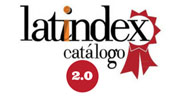Efecto de la transpiración sobre la escorrentía en dos tipos de bosque de la cordillera de la costa, sur de Chile
DOI:
https://doi.org/10.29019/enfoqueute.v4n2.26Palabras clave:
Balance hídrico, bosque nativo siempre verde, bosque nativo deciduo, transpiración, escorrentíaResumen
(Recibido: 2013/09/03 - Aceptado: 2013/11/20)
En esta investigación se comparó la tasa de transpiración y su efecto en la escorrentía en dos microcuencas con bosque nativo siempreverde (Bonifacio) y deciduo (Las Palmas) durante el cambio estacional primavera-verano. Las variables utilizadas fueron precipitación, escorrentía, índice de área foliar, transpiración de especies, y distribución del agua en el suelo. Los resultados mostraron un mayor consumo de agua en el bosque deciduo traduciéndose en una mayor evapotranspiración con 2273,6 mm en comparación al bosque siempreverde con 1740 mm, generando una mayor escorrentía en este último. La comparación entre los índices de área foliar de los dos bosques mostraron diferencia, sobretodo en la primavera para el bosque deciduo, ya que al aumentar su tasa transpiratoria por incremento de biomasa, generó una menor escorrentía a pesar que existieron mayores precipitaciones. Además las especies del bosque siempreverde consumieron el agua de los primeros centímetros (10-20) del perfil del suelo a diferencia del bosque deciduo, donde se observó una disminución en la humedad del suelo a una profundidad un poco mayor (40 cm). En cuanto al rendimiento hídrico, se pudo mostrar con este trabajo que el bosque siempreverde es más eficiente que el bosque deciduo durante el período de activo crecimiento primavera-verano.
Descargas
Descargas
Publicado
Número
Sección
Licencia
Los autores retienen todos sus derechos (© copyright).
- Los autores retienen sus derechos de marca y patente, y también sobre cualquier proceso o procedimiento descrito en el artículo.
- Los autores retienen el derecho de compartir, copiar, distribuir, ejecutar y comunicar públicamente el artículo publicado en Enfoque UTE (por ejemplo, colocarlo en un repositorio institucional o publicarlo en un libro), siempre que se dé el reconocimiento de su publicación inicial en la revista Enfoque UTE.
- Los autores retienen el derecho a hacer una posterior publicación de su trabajo, de utilizar el artículo o cualquier parte de aquel (por ejemplo: una compilación de sus trabajos, notas para conferencias, tesis, o para un libro), siempre que indiquen la fuente de publicación (autores del trabajo, revista, volumen, número y fecha).
























